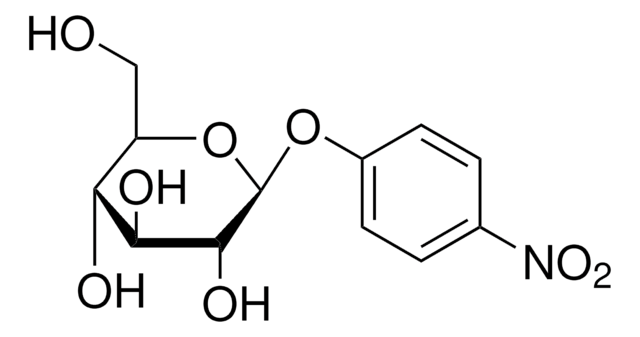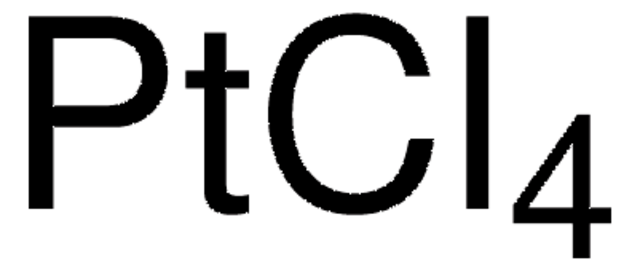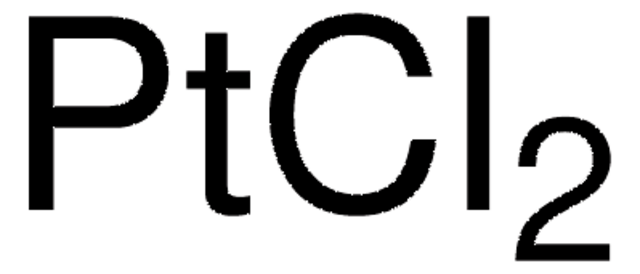P7082
Acide chloroplatinique hexahydrate
BioXtra
Synonyme(s) :
Acide hexachloroplatinique hexahydrate, Chlorure platinique hexahydrate, Hexachloroplatinate(IV) d’hydrogène hexahydrate
About This Item
Produits recommandés
Qualité
BioPerformance Certified
Gamme de produits
BioXtra
Forme
powder
Concentration
≥37.5% Pt (gravimetric)
Impuretés
≤0.005% Phosphorus (P)
≤0.1% Insoluble matter
Solubilité
H2O: 0.5 M, clear, orange
Traces d'anions
sulfate (SO42-): ≤0.05%
Traces de cations
Al: ≤0.0005%
Ca: ≤0.01%
Cu: ≤0.0005%
Fe: ≤0.001%
K: ≤0.005%
Mg: ≤0.005%
NH4+: ≤0.2%
Na: ≤0.01%
Pb: ≤0.001%
Zn: ≤0.0005%
Température de stockage
room temp
Chaîne SMILES
O.O.O.O.O.O.Cl.Cl.Cl[Pt](Cl)(Cl)Cl
InChI
1S/6ClH.6H2O.Pt/h6*1H;6*1H2;/q;;;;;;;;;;;;+4/p-4
Clé InChI
PIJUVEPNGATXOD-UHFFFAOYSA-J
Vous recherchez des produits similaires ? Visite Guide de comparaison des produits
Application
- Pt decorated MoS(2) nanoflakes for ultrasensitive resistive humidity sensor: This study explores the use of chloroplatinic acid hexahydrate as a precursor for depositing platinum on MoS2 nanoflakes, enhancing their performance in humidity sensing applications (Burman et al., 2018).
Mention d'avertissement
Danger
Mentions de danger
Classification des risques
Acute Tox. 3 Oral - Eye Dam. 1 - Resp. Sens. 1 - Skin Corr. 1B - Skin Sens. 1
Code de la classe de stockage
6.1C - Combustible acute toxic Cat.3 / toxic compounds or compounds which causing chronic effects
Classe de danger pour l'eau (WGK)
WGK 1
Point d'éclair (°F)
Not applicable
Point d'éclair (°C)
Not applicable
Équipement de protection individuelle
Eyeshields, Faceshields, Gloves, type P3 (EN 143) respirator cartridges
Faites votre choix parmi les versions les plus récentes :
Déjà en possession de ce produit ?
Retrouvez la documentation relative aux produits que vous avez récemment achetés dans la Bibliothèque de documents.
Les clients ont également consulté
Notre équipe de scientifiques dispose d'une expérience dans tous les secteurs de la recherche, notamment en sciences de la vie, science des matériaux, synthèse chimique, chromatographie, analyse et dans de nombreux autres domaines..
Contacter notre Service technique










